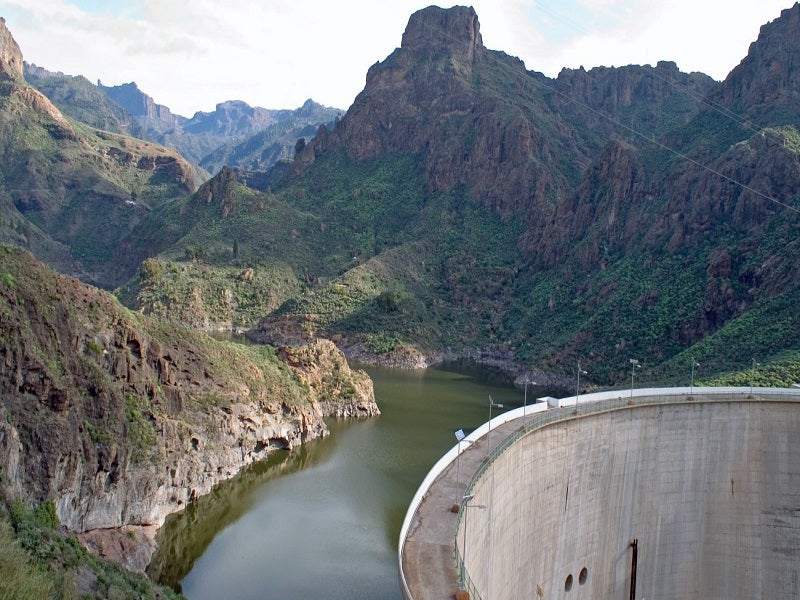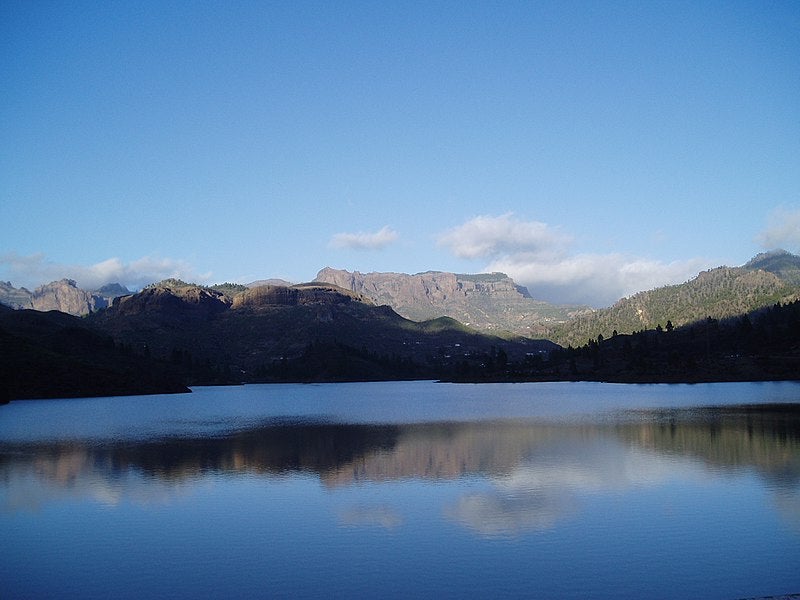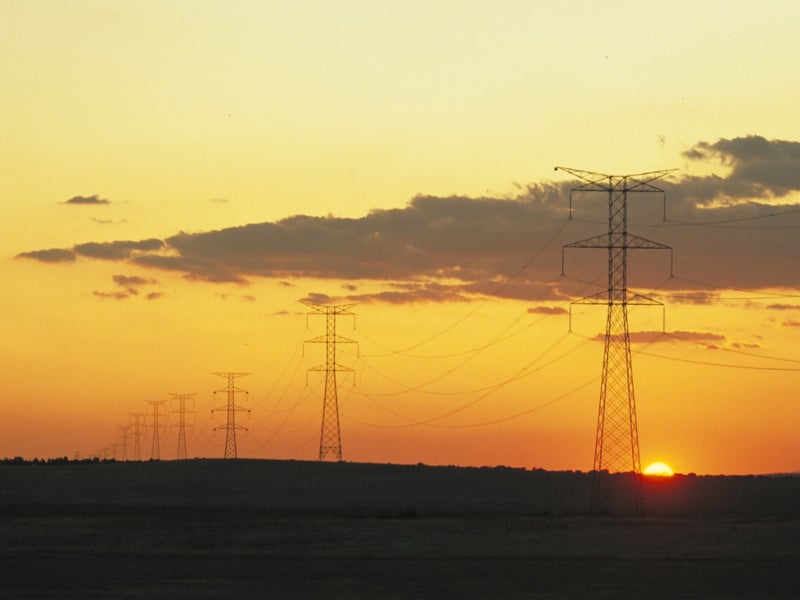Salto de Chira pumped storage hydropower station (also known as Chira-Soria pumped storage hydropower plant) is being developed in Gran Canaria, Spain. Red Electrica Infraestructuras en Canarias (REINCAN), a subsidiary of transmission system operator Red Electrica, is the project developer.
The 200MW pumped storage plant is the first energy storage project to be developed in the Canary Islands. It will increase the share of renewable energy generation in the region by 37% and offset annual CO2 emissions by 20%.
The cornerstone-laying ceremony marking the project’s construction was held in February 2022. The plant is expected to come on stream by 2027 and will have an energy storage capacity of 3.5GWh.
The project is expected to generate more than 4,300 jobs during construction. It will increase the energy supply security in the region and contribute to achieving €122m ($139m) of annual savings in variable generation costs by minimising dependence on costly energy imports.
Location details
The Salto de Chira pumped storage hydropower plant is located on the island of Gran Canaria in Arguineguín, Spain.
It will use the two large inland reservoirs at Chira and Soria dams. The 608m-high Soria dam will serve as the lower reservoir, while the 901m-high Chira dam will be the upper reservoir.
The water will be pumped from the Soria reservoir to the Chira reservoir, where it will be stored and used during periods of high energy demand.
Salto de Chira hydropower plant development details
Salto de Chira’s reversible hydroelectric power station project was transferred to Red Electrica from previous developers Unelco/Endesa in 2015.
The concession of the rights to use the water from the reservoir and basin of the Chira dam for the project was acquired by Red Electrica in October 2015 for 25 years, with an option to extend for another 25 years.
In 2016, the project was amended and proposed to be transformed into a pumped-storage hydroelectric plant. The favourable environmental impact statement of the project was obtained in July 2021.
The administrative authorisations and permits and declaration of public utility for the project were received by the General Directorate for Energy of the Government of the Canary Islands in December 2021.
The project’s design was patented in March 2022 due to its technological innovation that enables the flexible storage of energy and safe integration of renewables into the electricity grid.
Salto de Chira hydropower plant make-up
The Salto de Chira pumped storage hydropower plant will include six pumped storage units acting as giant natural batteries with a capacity of 200MW in turbine mode and 220MW in pumping mode.
The pumped storage units will be equipped with six reversible Francis turbines with 33MW capacity each, six synchronous alternators with 45MVA capacity each, six power converters and a hydraulic short-circuit scheme.
The project also includes a seawater desalination plant comprised of pumping stations I and II, a 20km desalinated water channel, a 2km access tunnel to the power station and a main control building designed per LEED Platinum standards.
In addition, the project includes the development of marine and auxiliary facilities for connection to the transmission grid such as a power station cavern and transformers cavern. A 14km tourist trail on the Arguineguín ravine over the aqueduct will also be developed to carry water from the desalination plant to the Soria dam.
The project is designed to include 91% of the infrastructure underground. The design and modelling were carried out using 5D virtual design and construction (VDC) technology, which uses three spatial dimensions in addition to time and cost to optimise the design and construction process.
The technology enables the optimal use of construction site locations and minimises environmental impact on the archaeological and ecological heritage of the islands.
Salto de Chira desalination plant
The Salto de Chira desalination plant is a reverse-osmosis seawater desalination plant being developed in the municipality of Arguineguín. It will have a production capacity of 7,800m3 per day and support the production of the freshwater required to operate the project. The water will be pumped from the sea and desalted before reaching the upper Chira reservoir.
The desalination plant will comprise a seawater intake tank and underwater outfall, including the intake pipe and discharge pipe, the seawater pumping station and the impulsion to the desalination plant. It will also include a product water tank and pumping stations, apart from a pre-treatment system.
The construction work at the seawater desalination plant started in February 2022.
Grid connection
The power plant will be connected to the 220/66kV Santa Agueda substation through a 20km-long, 220kV transmission line.
Financing
The Salto de Chira project secured $97.3m (€90m) in funding from the European Regional Development Fund (ERDF) in January 2023.
Contractors involved
In collaboration with Cobra Infrastructuras Hidráulicas, GE Renewable Energy, was awarded a contract to supply six pumped storage units of 37MW capacity each in May 2023.
GE Renewable Energy is a subsidiary of energy solutions provider GE while Cobra Infrastructuras Hidráulicas is a construction services provider. The contractual scope covers the design, supply, transport and commissioning of the turbines, generators, main transformers and electrical balance-of-plant equipment.
Construction company OSSA International was awarded the contract to construct the plant’s underground tunnels, shafts and caverns.
Tedagua, a subsidiary of the Cobra-ACS Group, was awarded an engineering, procurement and construction (EPC) contract for the seawater desalination plant of the project in June 2021.
UTE Ingeniería Soria-Chira, a consortium formed by AIN Active and Amberg Engineering, was awarded a contract to provide design and engineering services, technical assistance and construction management services in September 2018. AIN Active is a consulting and engineering company while Amberg Engineering is an engineering company.
Engineering consultant IDOM was chosen to develop the basic design for the hydropower plant by the previous developer Endesa. Red Electrica contracted IDOM to study configuration and update the geotechnical and topographical details.
iPresas, an infrastructure risk management firm, provided technical support for the numerical modelling of the Chira and Soria dams.






